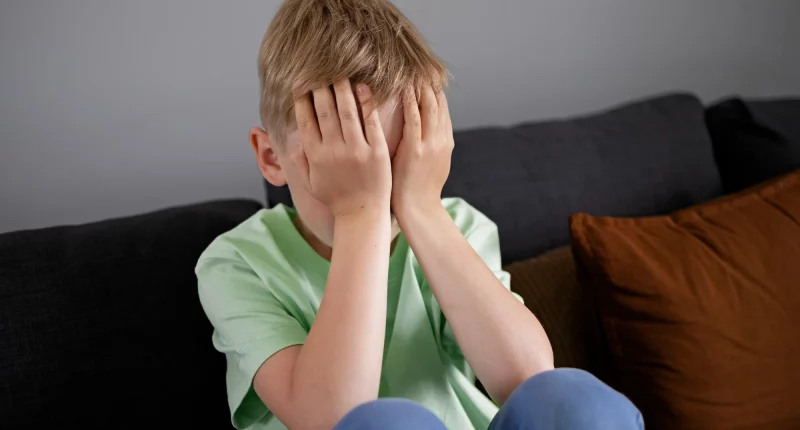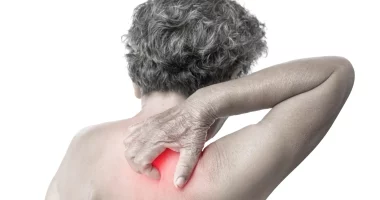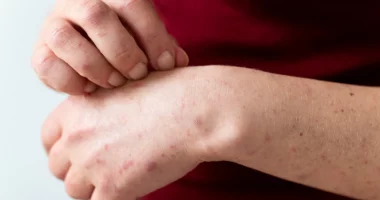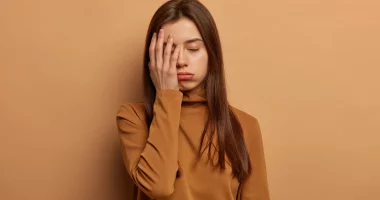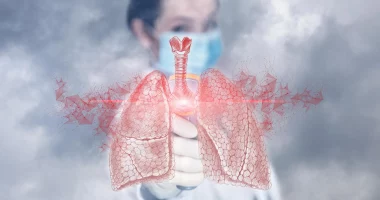Anxiety is a normal feeling everyone experiences sometimes. But it can also make your body react by shaking or sweating. When anxiety becomes too much, it can interfere with your daily life. Luckily, treatment can help manage it.
Anxiety disorders are a type of mental health problem. They cause people to feel too much fear, nervousness, and worry.
The Anxiety and Depression Association of America (ADAA) stated that about 40 million people in the US have an anxiety disorder. This makes anxiety disorders the most common mental health issue in the country. Still 36.9% of population with an anxiety disorder get treatment.
The American Psychological Association (APA) describes anxiety as “an emotion that includes feelings of stress, physical changes and disturbed thoughts like higher blood pressure.”
Understanding the difference between normal anxiety and an anxiety disorder that needs medical help is important. This knowledge can help someone recognize if they need to seek treatment for their anxiety.
Anxiety and Anxiety Disorders
Anxiety is a complicated reaction to things that seem threatening or dangerous. It can cause changes in your thinking, your body, and your actions.
When you face real or imagined danger, your body releases adrenaline, a chemical in your brain that prepares you to react quickly. This is known as the fight-or-flight response. Some individuals feel this response during challenging social situations or when making important decisions.
Sometimes, the feelings of anxiety can be much stronger or last longer than the actual cause of the stress. Physical symptoms like hypertension and feeling sick to your stomach can also happen. When these reactions are very intense and don’t match the situation, they can become an anxiety disorder.
When anxiety turns into a disorder, it can make everyday activities very difficult.
Symptoms of Anxiety
There are various anxiety disorders, each presenting with different symptoms. Common signs of anxiety include restlessness, uncontrollable feelings of fear, increased irritability, difficulty concentrating, and trouble sleeping. While many individuals occasionally face these signs in daily life, those with Generalized Anxiety Disorder (GAD) face them at insistent or extreme levels.
Types of Anxiety Disorders
The Diagnostic and Statistical Manual of Mental Health Disorders categorizes anxiety disorders into main types. Previously, conditions like post-traumatic stress disorder (PTSD), obsessive-compulsive disorder (OCD), and acute stress disorder were included under anxiety disorders. However, they are now classified separately.
Here are the main types of anxiety disorders:
Generalized Anxiety Disorder (GAD)
This chronic condition involves extreme, long-lasting worries and anxiety about various life objects, events, or situations. It is the most common anxiety disorder, and individuals with GAD often can’t identify the specific reason of their anxiety.
Panic Disorder
Panic disorder is characterized by brief or sudden triggers of intense fear and apprehension, known as panic attacks. These attacks can cause shaking, dizziness, nausea, confusion, and breathing difficulties. Panic attacks can happen unexpectedly or after stressful experiences.
Specific Phobia
This is an intense avoidance and fear of a particular situation or object. Unlike other anxiety disorders, phobias are linked to specific triggers. Even though the person may realize their fear is irrational, they cannot control their anxiety around the attack, which can be anything from situations to animals or everyday objects.
Agoraphobia
Agoraphobia is the avoidance and fear of events, places, or situations where escape might be difficult, or help would be unavailable if something goes wrong. It is often misunderstood as a fear of open spaces, but it can also involve fear of leaving home or using public transport.
Selective Mutism
This anxiety disorder mostly affects children, causing them to be unable to speak in certain situations or around certain people, despite having good verbal skills in familiar settings.
Social Anxiety Disorder
Social anxiety disorder involves a fear of being judged or embarrassed in social situations. It includes feelings of stage fright, fear of intimacy, and anxiety about humiliation and rejection.
Separation Anxiety Disorder
This disorder causes high levels of anxiety when separated from a certain person or certain place that provides a sense of security. While most common in young children, separation anxiety can affect individuals of all ages.
Causes
The causes of anxiety disorders are complex and varied. Multiple factors can contribute to their development, and these factors can interact in different ways. Sometimes, several causes might occur simultaneously, one might lead to another, or a particular cause might only result in an anxiety disorder if combined with other factors.
Possible causes include:
- Environmental Stressors: Issues like relationship problems or family conflicts can trigger anxiety.
- Genetics: A family history of anxiety disorders can increase the likelihood of developing one.
- Medical Factors: Symptoms of certain diseases or the side effects of medications can contribute to anxiety.
- Substance Withdrawal: Stopping the use of certain substances can lead to anxiety.
Treatment
Treatment for anxiety disorders often includes behavioral therapy, psychotherapy, and medication.
Sometimes, it is necessary to address other underlying conditions such as alcohol dependence or depression before treating the anxiety disorder itself.
Self-Treatment
In some cases, a person can manage an anxiety disorder at house without clinical observation. However, self-treatment may not be effective for serious or long-term anxiety disorders. For milder, shorter-term anxiety, several strategies can help, including:
- Stress Management: Techniques to manage stress can reduce anxiety.
- Relaxation Techniques: Practices such as deep breathing, meditation, or yoga can help calm the mind.
- Support Networks: Maintaining relationships with friends and family can provide emotional support.
- Physical Exercise: Regular physical activity can improve overall mood and reduce anxiety.
Counseling
A common approach to medicating anxiety is psychological counseling, which can include psychotherapy, cognitive behavioral therapy (CBT), or a combination of therapies.
Cognitive Behavioral Therapy (CBT) is a type of psychotherapy aims to identify and change harmful thought patterns that contribute to anxiety and other troublesome feelings.
Medications
Several types of medication can help manage anxiety:
- Benzodiazepines: These are sometimes prescribed for anxiety but can be addictive. Diazepam (Valium) is a common example.
- Antidepressants: These are often used to treat anxiety, even though they primarily target depression. Examples include selective serotonin reuptake inhibitors (SSRIs) like fluoxetine and citalopram.
- Tricyclic Antidepressants: These older drugs are effective for most anxiety disorders except obsessive-compulsive disorder (OCD). Comipramine or imipramine and are examples.
Additional medications that may be used to treat anxiety include:
- Monoamine Oxidase Inhibitors (MAOIs)
- Beta-Blockers
- Buspirone
If the side effects of any prescribed medication become serious, it is important to seek medical advice.
Prevention
There are several ways to lower the risk of developing anxiety disorders. It’s important to remember that feeling anxious is a normal part of life and doesn’t always mean you have a mental health problem.
Here are some tips that might help:
- Reduce Caffeine Intake: Drinking less coffee, tea, and other caffeinated beverages can help reduce anxiety.
- Consult a Health Professional: Before using over-the-counter or herbal remedies, check with a healthcare provider to ensure they are safe and won’t contribute to anxiety.
- Eat a Balanced Diet: Eating nutritious meals can support overall mental and physical health.
- Maintain a Regular Sleep Schedule: Getting enough sleep and having a consistent sleep pattern can help reduce anxiety.
- Exercise Regularly: Physical activity is a great way to relieve stress and improve mood.
- Avoid Alcohol and Drugs: Staying away from alcohol, cannabis, and other recreational drugs can prevent them from contributing to anxiety.
By following these tips, you can help manage anxiety and reduce the chances of it becoming a more serious issue.
Key Points to Remember
Anxiety is a normal emotion that helps us stay alert and respond to danger. It’s a natural part of life and necessary for survival.
However, when anxiety becomes too strong or happens too often, it can turn into an anxiety disorder. This means the anxious feelings are much more intense than the actual cause. There are different types of anxiety disorders, such as panic disorder, social anxiety and phobias.
Treating anxiety disorders usually involves a mix of therapy, medication, and counseling, along with some self-help strategies.
Living a healthy lifestyle can also make a big difference. Regular exercise and a balanced diet can help keep anxiety in check and promote overall well-being.
